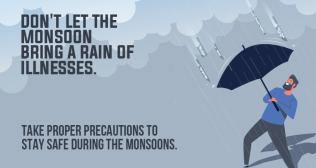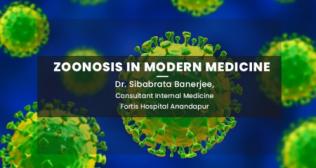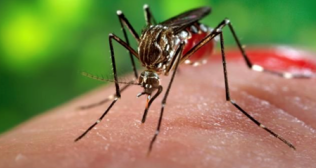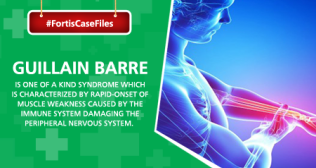
Vaccines Demystified: Separating Facts from Myths
Vaccines have long been a cornerstone of public health, preventing countless diseases and saving millions of lives. Yet despite scientific agreements, vaccine doubts are often fueled by misinformation, fear, and lack of clarity. For many, the complexity around types of vaccines and how they function creates unnecessary confusion.
Whether you're a concerned parent, a healthcare reader, or simply someone trying to stay informed, understanding the truth behind vaccines is essential to make educated health decisions.
What Are Vaccines, and Why Do They Matter?
At their core, vaccines are biological preparations designed to stimulate the immune system and provide immunity against specific diseases. They work by introducing a harmless component of a pathogen such as a weakened virus, inactivated bacteria, or synthetic proteins that "trains" your immune system to recognize and fight off the real threat if it appears later.
When you receive a vaccine, your body responds as if it's facing an actual infection. It produces antibodies, activates memory cells, and builds a defense mechanism without causing illness. This proactive immunity is what protects you from potentially life-threatening diseases.
Beyond personal protection, vaccination contributes to herd immunity. This means that when a significant portion of the population is immune, disease transmission slows, indirectly protecting those who cannot be vaccinated like infants or immunocompromised individuals.
Yet despite overwhelming scientific support, public confusion continues. Is natural immunity better? Can vaccines cause the illness they're meant to prevent? These questions persist due to circulating myths and partial truths making it vital to return to evidence-based understanding.
The Different Types of Vaccines Explained
Not all vaccines are created the same. There are different types of vaccines, each engineered based on the nature of the disease and how best to stimulate a safe, lasting immune response. Understanding these categories can reduce hesitation and reinforce trust in modern medicine.
1. Live Attenuated Vaccines
These contain a weakened form of the live virus. Though they replicate inside the body, they don't cause disease in healthy individuals. Examples include:
- Measles, Mumps, and Rubella (MMR)
- Varicella (chickenpox)
- Yellow fever
They offer strong, long-lasting immunity but aren’t suitable for people with weakened immune systems.
2. Inactivated Vaccines
This use killed versions of the virus or bacteria. While they can't replicate or cause illness, multiple doses or boosters may be needed.
- Polio (IPV)
- Hepatitis A
- Rabies
3. Subunit, Recombinant, Polysaccharide, and Conjugate Vaccines
These vaccines use specific parts of the virus like protein or sugar fragments to trigger an immune response.
- HPV (Human Papillomavirus)
- Hepatitis B
- Whooping Cough (part of DTaP)
They're ideal for those with weakened immunity because they avoid using whole pathogens.
4. mRNA Vaccines
These are relatively new. They use messenger RNA to instruct cells to produce a protein that triggers immunity.
- COVID-19 vaccines like Pfizer-BioNTech and Moderna
5. Viral Vector Vaccines
Use a modified virus (not the disease-causing one) to deliver genetic material.
- Johnson & Johnson COVID-19 vaccine
- Ebola vaccine
These various types of vaccine shots show the scientific diversity behind vaccine development; each designed for safety and effectiveness based on disease complexity.
Common Myths And Facts About Vaccines
In an age of information overload, separating fact from fiction is harder than ever. Let’s tackle the most enduring myths surrounding vaccines:
Myth 1: Vaccines cause the disease they’re meant to prevent.
Fact: Most vaccines contain either inactivated organisms or non-infectious components. Even live attenuated vaccines are engineered to avoid causing illness. Getting vaccinated does not mean you’ll get the disease.
Myth 2: Natural immunity is better than vaccine-induced immunity.
Fact: While natural infection can sometimes lead to strong immunity, it comes at the risk of severe complications or death. Vaccines offer controlled, safe exposure to build immunity without the disease's dangers.
Myth 3: Too many vaccines overwhelm the immune system.
Fact: The immune system is exposed to thousands of pathogens daily. Vaccines represent only a tiny fraction of what the body handles routinely. The CDC confirms that the current vaccine schedule is safe and effective.
Myth 4: Vaccines contain harmful ingredients.
Fact: Ingredients like preservatives or stabilizers are used in safe, regulated amounts. Claims about toxins like mercury (specifically thimerosal) are based on outdated or misrepresented studies.
Myth 5: Vaccines are unnecessary for rare diseases.
Fact: Vaccination keeps diseases rare. The reason you don’t see polio or measles frequently is because of vaccines; not because these illnesses disappeared on their own.
Dispelling these myths is essential for public health and for reinforcing confidence in all types of vaccines.
Benefits Beyond Disease Prevention
While the primary purpose of vaccines is to prevent specific infections, their benefits stretch far beyond.
Economic Benefits
Vaccination reduces healthcare costs, sick leaves, and hospital admissions. According to WHO, every $1 spent on vaccines yields $44 in economic returns due to avoided healthcare expenses and productivity loss.
Community Protection
Through herd immunity, vaccines protect vulnerable populations who cannot be immunized such as cancer patients, newborns, and individuals with severe allergies.
Global Disease Elimination
Thanks to aggressive vaccination campaigns, smallpox has been eradicated, and diseases like polio are on the brink of extinction in many regions.
Vaccines also prevent complications associated with illnesses. For example, the chickenpox vaccine doesn't just prevent a rash; it prevents hospitalization due to pneumonia, bacterial infections, and shingles later in life.
Understanding the broader value of immunization helps frame vaccines as both a personal and public responsibility.
How Vaccine Development Works
Modern vaccine development is one of the most rigorously tested medical processes. It typically follows a multi-phase clinical trial system:
- Preclinical Testing: Laboratory and animal studies evaluate safety and immune response.
- Phase I: Small human trials (dozens of people) check safety.
- Phase II: Hundreds of participants are enrolled to test efficacy and identify side effects.
- Phase III: Thousands are tested across regions and demographics for broader analysis.
- Approval and Monitoring: Regulatory bodies like the FDA or WHO review data. Even after approval, post-market surveillance ensures ongoing safety.
Emergencies like the COVID-19 pandemic fast-tracked processes, but no corners were cut in testing for safety or effectiveness. mRNA and viral vector vaccines underwent the same stages; just with global coordination and funding that compressed the timeline.
These safeguards reinforce why vaccines remain one of the most trusted interventions in modern medicine.
FAQs
Q1. Are all vaccines injected?
Ans. No. While most types of vaccine shots are intramuscular or subcutaneous, some vaccines are oral (like rotavirus) or nasal sprays (flu vaccine).
Q2. Do adults need vaccines too?
Ans. Absolutely. Adults need booster shots for tetanus, HPV, flu, COVID-19, and others depending on age and medical history.
Q3. Can you be allergic to a vaccine?
Ans. Severe allergic reactions are extremely rare. Most side effects are mild and temporary such as soreness or low-grade fever. Inform your provider of any known allergies.
Q4. What if I missed a vaccine dose?
Ans. You can usually continue where you left off. Consult your healthcare provider to update your schedule safely.
Q5. Why are there multiple doses?
Ans. Some types of vaccines require multiple doses to build or sustain immunity. This doesn't mean the first dose is ineffective; it simply helps reinforce the body’s memory of the pathogen.
Conclusion & Call to Action
Vaccines are not just a medical tool; they are a triumph of science, policy, and public cooperation. Understanding the different types of vaccines, how they work, and debunking myths empowers people to make informed choices.
In a time of global uncertainty and misinformation, clarity matters more than ever. Whether it’s childhood immunizations or adult boosters, staying up to date protects both individual and community health.
Take charge today: review your vaccine history, consult a medical provider, and help spread facts; not the fear. In the long run, immunity begins with information.


















